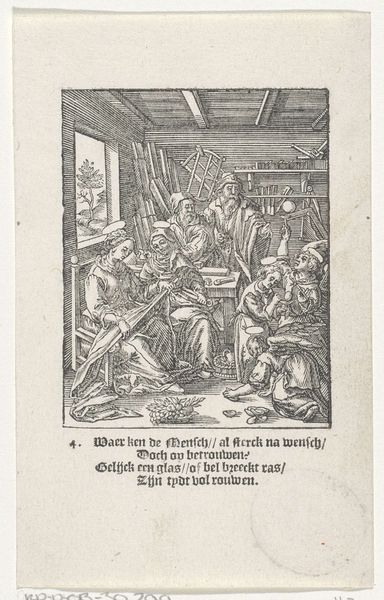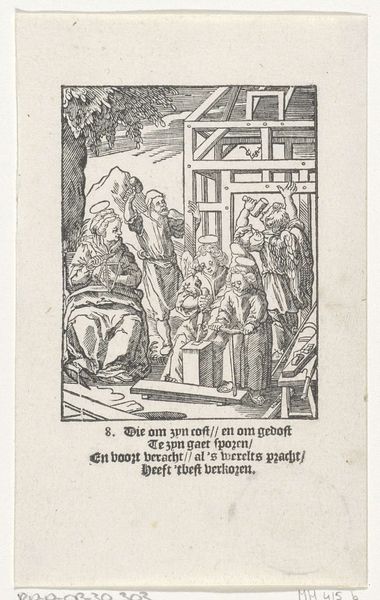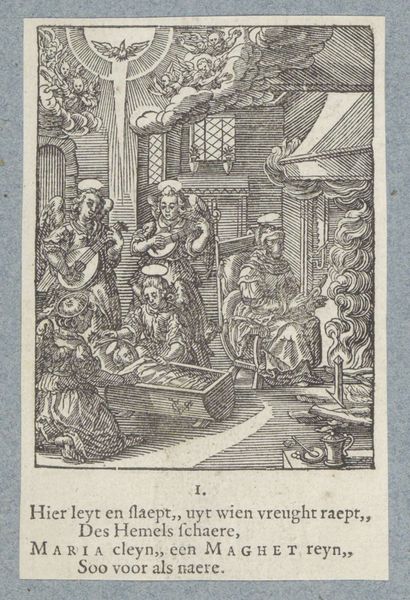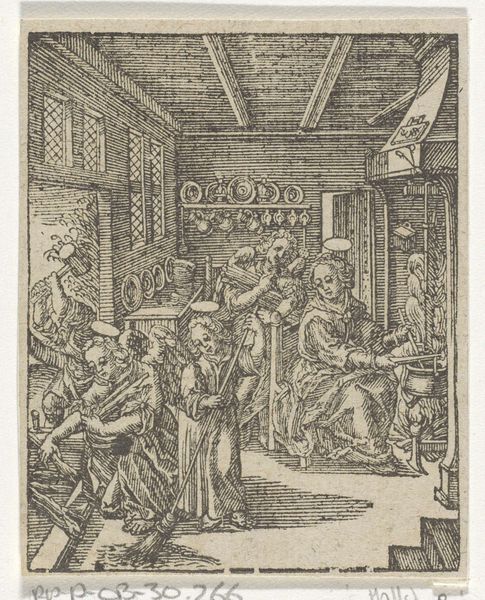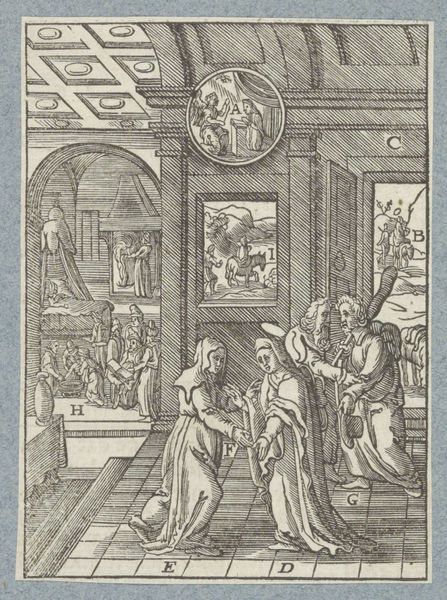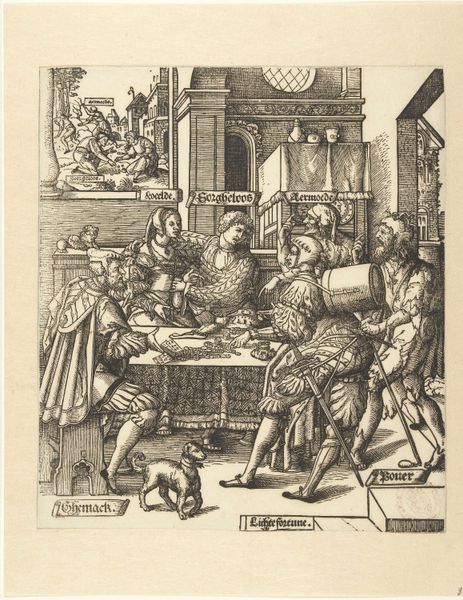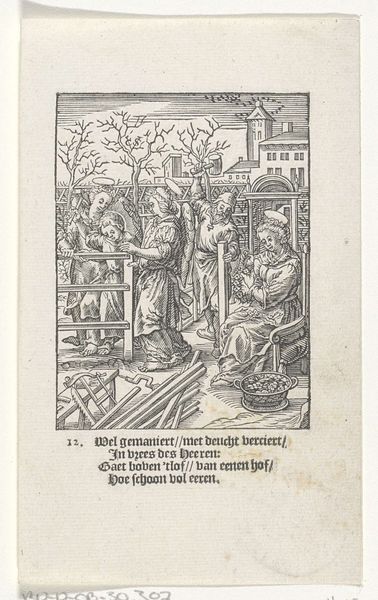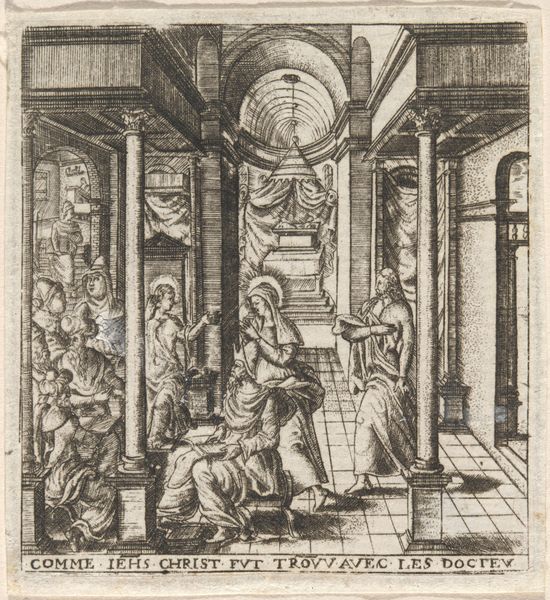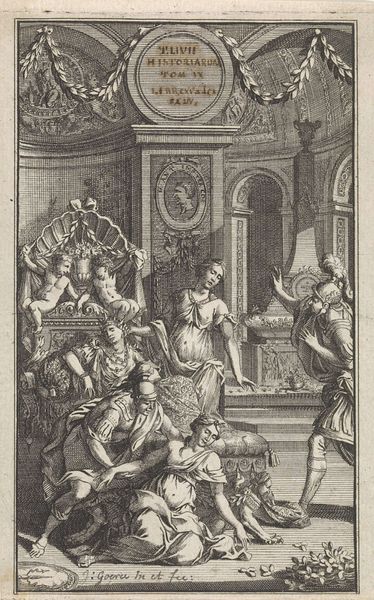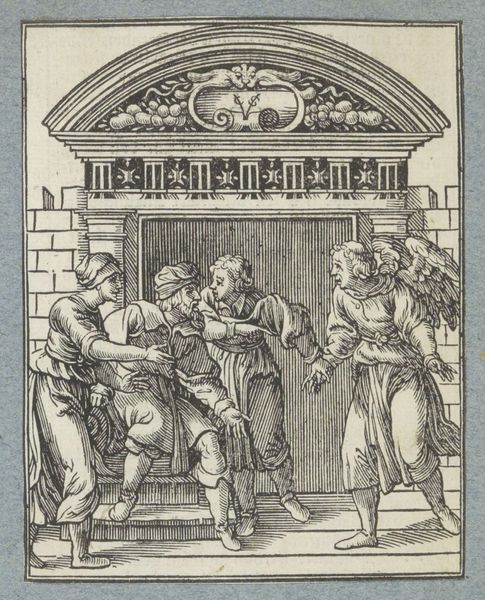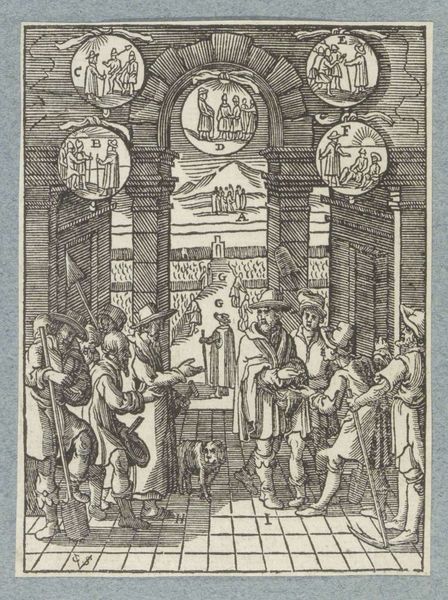
print, engraving
# print
#
figuration
#
line
#
genre-painting
#
history-painting
#
northern-renaissance
#
engraving
Dimensions: height 137 mm, width 87 mm
Copyright: Rijks Museum: Open Domain
Curator: This engraving from 1617, "Christuskind veegt de vloer", or "Christ Child Sweeping the Floor," is by Christoffel van (II) Sichem and resides here at the Rijksmuseum. The details rendered through line work alone are captivating. Editor: My first impression is of a stark and almost didactic scene, softened only slightly by the intimate glimpse into domestic life and the almost surreal inclusion of holy figures doing chores. It feels so ordinary and extraordinary all at once. Curator: Absolutely, the seemingly mundane activities depicted are, in fact, laden with profound symbolic meaning. Notice how the halos subtly indicate the sacred nature of even these most quotidian actions. It calls to mind medieval ideas around purgatory and the concept of penance. The broom itself, sweeping the floor, takes on the weight of purification. Editor: I see that now. And look how the woman sits calmly at her spinning wheel! But let's think about the original audience, especially women, who would have overwhelmingly been performing this labor: What was the political and cultural effect of seeing these domestic spaces transformed by the presence of Christ, actively engaged in housework? It feels like a divine validation of their role, but could also be interpreted as another demand placed on women, equating piety with domestic servitude. Curator: An incisive observation! Indeed, the spinning wheel, the plates neatly arranged on the shelves—they speak volumes about the virtues of order, diligence, and piety that were so valued in Northern Renaissance culture. The arrangement reinforces established gender roles. Editor: And considering the political and religious turmoil of the period, perhaps images such as these functioned as both a form of comforting assurance of the sacredness of their struggles but also as prescriptive ideology reinforcing existing social orders? Curator: That seems spot-on, especially given the historical tensions during the 17th century between Protestantism and Catholicism. There's a kind of quiet strength conveyed through the symbolism, a sense of continuity amidst societal shifts. Editor: I agree, and exploring art like this forces us to reconcile with historical power structures and consider art's ambivalent place in reinforcing or challenging them. Curator: It encourages one to contemplate the symbols of home and family and consider the ongoing role of domesticity within society and its reflections in art history. Editor: I'll definitely be looking at images of labor differently moving forward.
Comments
No comments
Be the first to comment and join the conversation on the ultimate creative platform.
